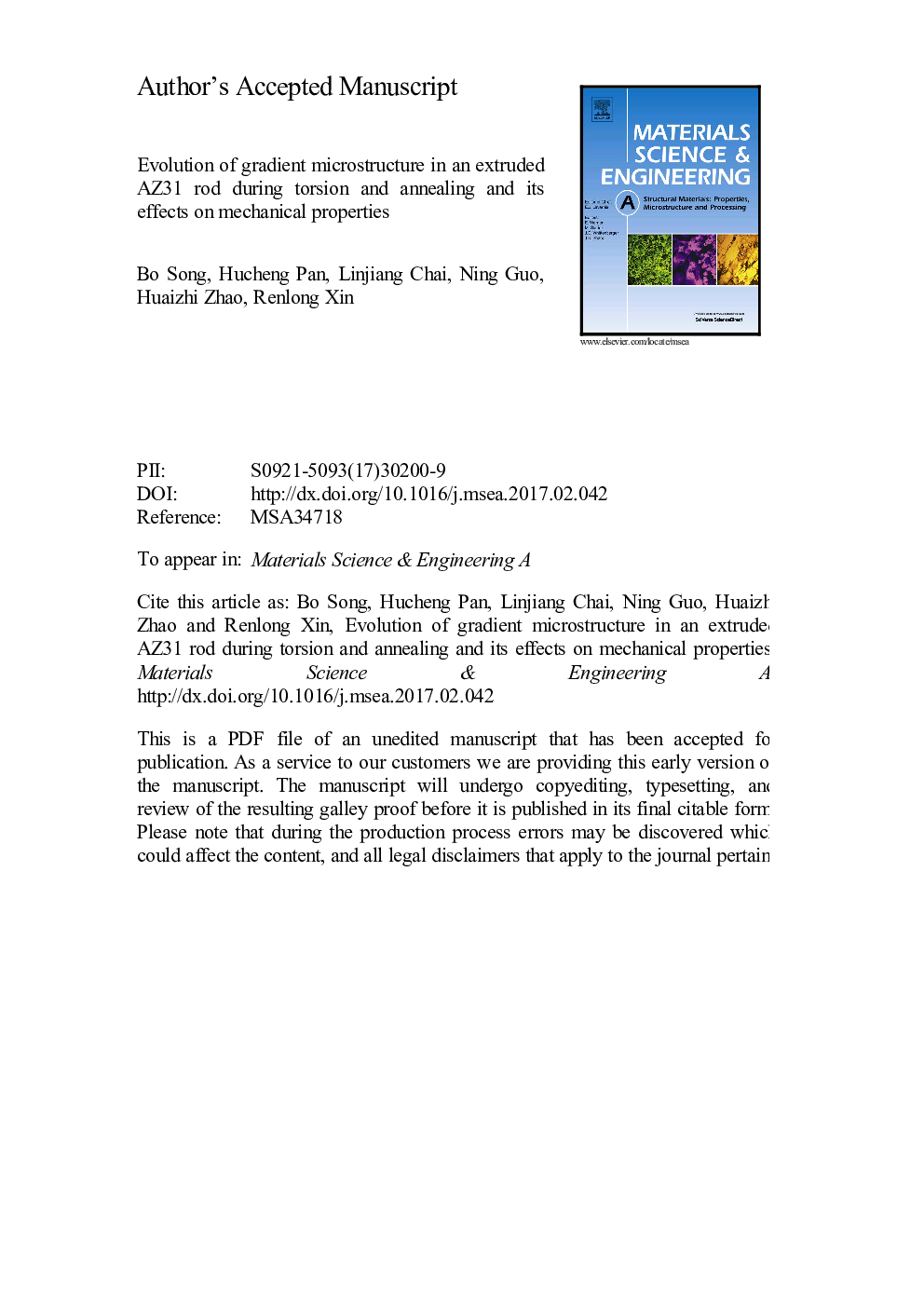| Article ID | Journal | Published Year | Pages | File Type |
|---|---|---|---|---|
| 5456491 | Materials Science and Engineering: A | 2017 | 27 Pages |
Abstract
In this study, the AZ31 rods with gradient distributions of stored dislocations, {10-12} twins and texture components are fabricated by the free-end-torsion processing firstly. Influences of annealing treatment on the gradient microstructures and mechanical properties are then investigated. The results show that the annealing does not vary the torsion-deformed textures, but may cause recovery and recrystallization motivated by releasing of the stored dislocations. And the recrystallization behavior closely depends on the shear strain. High shear strain can generate high stored energy and increase the thermal mobility of {10-12} twin boundaries, resulting in the reduction of recrystallization temperature and promotion of nucleation. After annealing, recrystallization grain size gradually decreased from center to edge positions. Prior to annealing, the gradient hardness distribution in torsion-deformed sample is mainly attributed to the gradient dislocations. After annealing, grain size becomes the dominated factor for the hardening. Torsion deformation can almost eliminate yield asymmetry without the loss of strength and plasticity. Remarkable low yield asymmetry can be ascribed to grain refinement by twins and the textural change. With increasing annealing temperature up to 300 °C, yield asymmetry increases continuously owing to the grain growth induced by the static recrystallization. Finally, the relevant mechanisms are investigated and discussed.
Related Topics
Physical Sciences and Engineering
Materials Science
Materials Science (General)
Authors
Bo Song, Hucheng Pan, Linjiang Chai, Ning Guo, Huaizhi Zhao, Renlong Xin,
